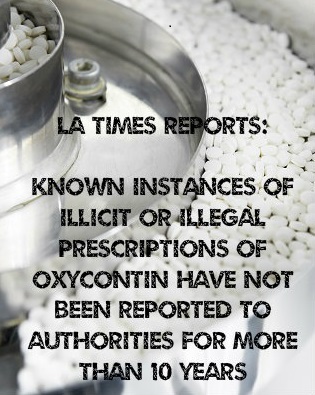Buprenorphine is an opioid narcotic medication used to ease a reliance on stronger narcotics during recovery from active drug addiction. For specific reasons, doctors often combine the use of this medication with a secondary medication called naloxone. In a study published in November 2013 in the journal Addictive Behaviors, researchers from the State University of New York, Buffalo explored the reasons some people successfully complete buprenorphine/ naloxone treatment for opioid addiction, while others do not.
Dependence Risks Of Using Opioids
All opioid substances produce two primary effects when introduced into the human body: a highly pleasurable (euphoric) mental state and a significant reduction in the ability to feel pain. Doctors rely on the pain-relieving effects of prescription opioids to relieve serious forms of pain, but must constantly monitor the possibility for the onset of opioid dependence and the subsequent development of an opioid addiction. Since illegal or illicitly used opioids produce the same basic effects as suitably prescribed opioids, intake of these substances also comes with serious dependence and addiction risks.
How Buprenorphine Is Used For Addiction
 Buprenorphine is a significantly less powerful drug than the popular legal and illegal opioids of abuse. When an opioid addict switches over to buprenorphine use, he or she commonly experiences a reduction in euphoric and painkilling sensations, and also gradually reduces his or her level of physical dependence on narcotics in general. Doctors take advantage of these qualities by prescribing the medication during opioid addiction treatment. Instead of facing intense, potentially overwhelming symptoms of opioid withdrawal during the early stages of the treatment process, patients who switch over to buprenorphine typically avoid withdrawal and set themselves up for an increased likelihood of long-term addiction recovery.
Buprenorphine is a significantly less powerful drug than the popular legal and illegal opioids of abuse. When an opioid addict switches over to buprenorphine use, he or she commonly experiences a reduction in euphoric and painkilling sensations, and also gradually reduces his or her level of physical dependence on narcotics in general. Doctors take advantage of these qualities by prescribing the medication during opioid addiction treatment. Instead of facing intense, potentially overwhelming symptoms of opioid withdrawal during the early stages of the treatment process, patients who switch over to buprenorphine typically avoid withdrawal and set themselves up for an increased likelihood of long-term addiction recovery.
In the U.S., the manufacture and distribution of buprenorphine (and all other legal and illegal opioids) are regulated under a federal law called the Controlled Substances Act. This law specifically stipulates that doctors who give their patients buprenorphine during opioid addiction recovery must also either provide access to some sort of therapeutic counseling or direct their patients to other counseling resources. The counseling options most commonly offered to individuals receiving buprenorphine are a reward/punishment approach called contingency management (CM) and a gradual behavior modification therapy called cognitive behavioral therapy (CBT). However, in reality, not all buprenorphine recipients end up participating in a counseling program, even when they have access to such a program.
How Naloxone Is Utilized With Buprenorphine
Naloxone is not an opioid drug. In fact, it was originally developed as an anti-opioid medication, and has the ability to rapidly halt the effects of opioid intoxication inside the body. Doctors use the combination of buprenorphine and naloxone to reduce the chances that a person going through opioid addiction treatment will abuse buprenorphine instead of using that medication as directed. When the two medications are dissolved together under the tongue, enough buprenorphine reaches the bloodstream to help relieve opioid withdrawal; at the same time, the presence of naloxone limits buprenorphine’s impact and reduces its usefulness as a target of drug abuse. A prescription medication called Suboxone contains the proper proportions of buprenorphine and naloxone to achieve the desired treatment objectives.
Buprenorphine/Naloxone Opioid Addiction Treatment
In the study published in Addictive Behaviors, the SUNY Buffalo researchers used an examination of 356 opioid-addicted adults to explore the factors that contribute to the successful completion of addiction programs centered on the combined use of buprenorphine and naloxone. All of these adults were enrolled in a six-month treatment course that provided access to counseling resources. 127 of the participants successfully completed the course, while the remaining 229 participants did not.
After assessing the impact of a range of potential factors, the researchers concluded that the individuals who successfully completed a naloxone and buprenorphine opioid addiction treatment differed from those who did not complete treatment in two key ways. First, they took advantage of the counseling resources made available to them and established good records of counseling attendance. Interestingly enough, they also had histories of previous, significant physical injuries.
The authors of the study published in Addictive Behaviors don’t know for sure why prior experience of a physical injury increases the chances that an individual will complete buprenorphine/naloxone-based opioid addiction treatment. However, they do have a potential explanation. Previously injured people may have a history of exposure to chronic pain; in turn, use of buprenorphine during addiction treatment may help relieve that pain in addition to decreasing a reliance on the addictive effects of stronger opioids. It is the combination of withdrawal avoidance and ongoing pain reduction that may account for the link between prior injury and successful buprenorphine/naloxone treatment outcomes.
Read More About Opioid Related Disorders And Break Free From Addiction!
Prescription painkiller abuse has grown large enough to gain the attention of pharmaceutical companies, doctors, addiction experts, and even the federal government. There are things which can be done to try and halt the abuse of prescription medications. However, those in the know say that when access to opioids is shut down, we can expect substance abusers to move on to heroin.
Made from a synthetic form of opium, opioids are heavy-duty pain relievers like Oxycodone (Percocet), Hydrocodone (Vicodin), OxyContin (a longer-lasting form of Oxycodone) and codeine. Hydrocodone and Oxycodone are usually mixed with aspirin or acetaminophen to produce longer-lasting pain relief.
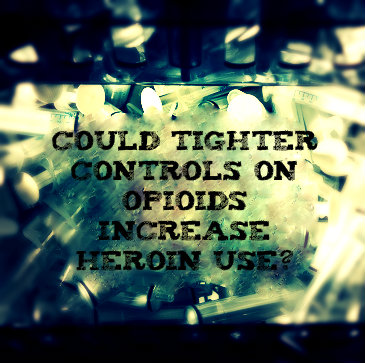 Opioids – Number One Prescribed Medication – Problem In The U.S.
Opioids – Number One Prescribed Medication – Problem In The U.S.
Opioids are the number one prescribed medication in the nation and are responsible for the vast majority of drug-related injuries and fatal overdoses, partly because people view them as safer than street drugs. Their wide availability means more drugs are in the hands of abusers.
Most opioid addicts started with a doctor’s prescription for a legitimate need. People who take more pills for a longer period than was prescribed can easily become addicted. Young people who use them recreationally can also quickly form a habit.
Thomas McClellan, the former Deputy Director for the White House Office of National Drug Control Policy, says if we can address these three issues the problem could be controlled:
3 Opioid Issues
- Over-Prescribing – Doctors want to control pain because it promotes healing and fosters a strong doctor-patient bond. Banning opioids outright will not work, but perhaps changing the standards of care which guide prescribing could.
- Insufficient Monitoring – Efforts are underway in most states to establish state-level monitoring programs. Under these programs every doctor who prescribes, patient who picks up and pharmacy that fills a controlled drug prescription will go on record. This should help reduce over-prescribing by doctors and keep patients from going from doctor to doctor in search of prescriptions.
- Patient Misuse – The Federal Drug Administration would like to see Hydrocodone reclassified to Schedule II so that it would have more oversight and be less accessible to patients. Under Schedule II constraints such as limiting automatic refills could help to reign in misuse.
How Tightly Controlling Opioids Could Increase Heroin Use
Would these measures stop painkiller abuse? Perhaps. But even if we succeed, experts predict that drug use will simply shift to another opiate: heroin.
Opioids are synthetic opiates (forms of opium) while heroin is a non-synthetic form. In other words, the drugs are somewhat related and produce similar results. Heroin costs about one half as much as synthetic opioids. So if opioids become more expensive and harder to get, experts predict that users will just switch to heroin.
Communities need to be ready for the shift that will most likely happen as a result of opioid crackdowns. The next question will be how to handle the heroin crisis.
If you or a love one needs help finding a drug rehab facility contact an Elements Recovery Advisor now! 855-763-6488
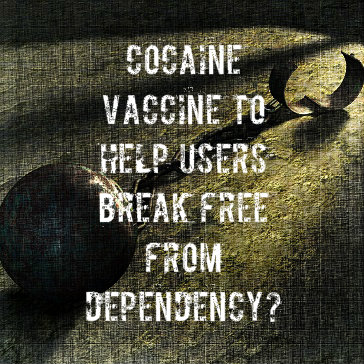 More than 22 million people in the United States are dealing with drug abuse, and the yearly healthcare dollars spent fighting this problem amount to more than 180 million. Cocaine abuse is one of the largest and most expensive problems under the larger umbrella of drug abuse, resulting in the most emergency room visits of any illicit drug.
More than 22 million people in the United States are dealing with drug abuse, and the yearly healthcare dollars spent fighting this problem amount to more than 180 million. Cocaine abuse is one of the largest and most expensive problems under the larger umbrella of drug abuse, resulting in the most emergency room visits of any illicit drug.
Unlike heroin addiction, which can often be treated successfully with a substitute drug called methadone, cocaine addiction has no such handy substitute available. But a small group of scientists have been working on another potential weapon for fighting cocaine abuse: a cocaine vaccine.
The idea for a drug abuse vaccine has been around for more than a quarter of a century. Currently, there are two major research teams actively engaged in developing a vaccine for clinical trials. These research groups are led by Kim Janda, Ph.D, of the Scripps Research Institute, and Thomas Kosten, M.D, of the Baylor College of Medicine. In 2010, Kosten’s team ran the first ever late-stage cocaine vaccine trial, with their vaccine TA-CD.
The Vaccine Principle
Vaccines have been in existence for hundreds of years, perhaps even more than 1,000 years. They operate in a very simple way: introducing a tiny amount of a disease (often in weakened or killed form) or something chemically similar to a disease into a person’s bloodstream so that the immune system is able to identify the invader and create antibodies. Once the human immune system learns to create antibodies for a particular disease, it can do so quickly again if the disease reappears.
However, a drug like cocaine is different from a disease-causing microbe. Cocaine in the bloodstream is much smaller than a microbe, and essentially invisible to the human immune system. As a result, recent approaches to the creation of a cocaine vaccine have involved attaching the vaccine to a virus. This helps the immune system learn to identify the substance and to destroy it.
Success Of Cocaine Vaccine And Questions
Both Kosten’s vaccine, TA-CD, and Janda’s vaccine, known as GNE, have had some measure of success in clinical trials. Janda and his research partner, Ronald Crystal of Weill Cornell, reported that GNE showed an impressive ability to destroy cocaine in the bloodstreams of monkeys. Kosten found similarly effective results from his human trial of TA-CD.
However, questions remain as to whether simply destroying cocaine in a person’s bloodstream is really an effective way of fighting drug abuse. Unlike measles or smallpox, two diseases almost completely eradicated in the first world because of vaccines, drug addiction is not simply a physical illness. Drug abuse can have serious physical effects, but addiction is a brain disease.
In the late-stage trial by the Baylor team, the results showed that the destruction of cocaine in addicts’ bloodstreams did not eliminate or reduce cravings for the drug. In some cases, the addicts in the trial took many times their usual dose of cocaine in an attempt to achieve the high that they were craving. For some subjects, this desperate search for a high was financially disastrous.
Addiction Prevention vs. Addiction Treatment
The purpose of a true vaccine is the prevention, rather than the treatment, of a serious disease. Although a cocaine vaccine may eventually be a successful tool for treating cocaine addiction, it may be even more effective when used as other vaccines are used: to prevent the initial development of a disease.
For individuals who are not addicted to cocaine, a successful drug vaccine could prevent them from ever experiencing any of the physical effects of the drug, including the chemical high that creates an addictive feedback loop in the human brain’s reward centers. This would prevent people from developing a dependency on the drug and suffering from cravings.
However, with so many people in the United States suffering from cocaine addiction, treatment remains a high priority for the scientists working on a vaccine. While an effective vaccine may never be a silver bullet that cures cocaine addiction on its own, it does have great potential as part of a larger treatment program. For example, a vaccine could essentially ensure addicts’ sobriety by destroying any cocaine that enters the system, even if they relapse.
Addiction is a complicated disease. For those of us who have never had an addiction, it can be easy to wonder why addicts can’t seem to make the decision to stop using and then do it. There are complicated brain chemical pathways that are affected by drugs and alcohol that lead to addiction and that make it almost impossible to stop using. Modern research has uncovered much of the role of the brain in addiction, but more recently has found that the immune system is also important.
The Immune System And The Brain
 Your body’s immune system is a complex network of different types of cells that are dedicated to protecting you from foreign invaders that cause sickness. Many of those immune cells live in the brain. These are called glial cells and they work alongside your neurons, or brain cells. The brain cells and immune cells that work together to regulate the responses of the immune system are called collectively, the neuroimmune system. This system keeps the brain healthy and mediates communication between the immune system and the central nervous system.
Your body’s immune system is a complex network of different types of cells that are dedicated to protecting you from foreign invaders that cause sickness. Many of those immune cells live in the brain. These are called glial cells and they work alongside your neurons, or brain cells. The brain cells and immune cells that work together to regulate the responses of the immune system are called collectively, the neuroimmune system. This system keeps the brain healthy and mediates communication between the immune system and the central nervous system.
Addiction’s Effects On The Neuroimmune System
Parts of the neuroimmune system are activated by various factors. Stress is one factor, which is why the feeling of being stressed can actually make you physically sick. Alcohol and drugs also trigger responses in the neuroimmune system. The responses can lead to disrupted decision making. This helps to explain why addicts make choices about using even when doing so is bad for them.
The response of the neuroimmune system to drugs and alcohol also changes a person’s affect and causes feelings of depression. Again, these feelings are characteristic of addiction. Researchers have even found that people with certain genetic variations in their neuroimmune system are more likely than others to succumb to addiction.
Innovative Addiction Treatments
With the increased understanding of how the immune system in the brain impacts addiction, researchers are able to come up with new treatments for this devastating disease. One such possible treatment may help addicts who use opioids like heroin and prescription painkillers. Studies have found that morphine, an opioid drug, binds to a certain immune system receptor that changes the dopamine pathway in the brain.
Dopamine is the brain chemical that is released when we feel something pleasurable. Drugs release huge floods of dopamine, which plays a role in developing addictions. The researchers hope that if they can block the immune receptor with a medication, they can stop the release of dopamine when someone uses an opioid. With no pleasurable sensation, there would be no addiction.
Methamphetamine is another seriously addictive drug that can be just as hard to quit as opioids. Research has shown how the drug negatively impacts the immune system of the user, so new studies have focused on targeting the immune system for treatment medications. A drug being developed for a variety of immune diseases may also help meth addicts. The drug reduces the immune response in the brain, which could help meth addicts feel better. One major hurdle to quitting is that the users feel awful when they give up meth. With the new medication, they may feel better, and less inclined to going back to using.
Other researchers have tackled cocaine addiction by working with the immune system. The new treatment is actually a vaccine. The researchers who developed it created a vaccine that would target cocaine and treat it as if it were an invader like a virus or bacterium. After being injected with the vaccine, mice in laboratory experiments showed an immune response that tackled any cocaine in the body. The result was that the mice did not get a high from cocaine. If the vaccine works in human trials, it could help addicts stop using. If they get no high, there will be no reason to use the drug.
The exciting field of addiction and the immune system is coming up with new information about the disease of addiction every day. With this new knowledge, researchers are able to create treatments that are medically- and evidence-based that may truly help people recover from addiction.
What Is Harm Reduction?
Harm reduction is a controversial technique used to help treat addicts, particularly drug addicts. The philosophy behind this method of treatment is to help an addict use safely, rather than forcing him to stop using. By aiding addicts, the caregivers reduce the potential for harm. Although using illegal drugs is always harmful, doing it in a safe environment helps to prevent overdose deaths and the spread of disease. Proponents of harm reduction believe that once a user is in a safe environment, he can make the choice to quit.
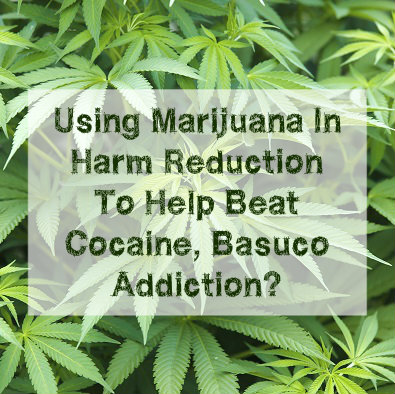 The method of harm reduction is not new. It has been around for decades and begun with the practice of giving heroin addicts a substitute drug called methadone. Other harm reduction programs include handing out clean needles to heroin users and providing a safe place to use. Critics of the technique feel that harm reduction only encourages addicts to keep using. In spite of criticisms, harm reduction continues to be used, not just in the US, but in other countries as well. In Colombia, officials are trying harm reduction treatment with cocaine addicts, and finding success.
The method of harm reduction is not new. It has been around for decades and begun with the practice of giving heroin addicts a substitute drug called methadone. Other harm reduction programs include handing out clean needles to heroin users and providing a safe place to use. Critics of the technique feel that harm reduction only encourages addicts to keep using. In spite of criticisms, harm reduction continues to be used, not just in the US, but in other countries as well. In Colombia, officials are trying harm reduction treatment with cocaine addicts, and finding success.
Colombia – Cocaine Capital Of The World
Colombia is the cocaine capital of the world, producing more of the illegal drug than anywhere else on the planet. Cocaine comes from a plant native to South America called coca. The leaves of this plant naturally contain cocaine, which is a psychoactive stimulant. For many years, the natives of the area have chewed coca leaves for the high, but have also used them for medicinal purposes.
To get the cocaine out of the leaves, drug manufactures must go through a multi-step chemical process and end up with the white powder that is sold in the illegal marketplace. Most of this cocaine comes out of Colombia and is smuggled into the United States. In Colombia and particularly in Bogota, the capital, there is a real problem with addicts who use a base form of cocaine. It is a low-quality, low-purity form of the drug called basuco. It is an intermediate product in the process of making cocaine and it often contains residues of the solvents used, like kerosene. It may also have fillers like crushed bricks or ashes. Basuco is even more addictive than cocaine and is a rising problem in Bogota.
Harm Reduction for Basuco Addicts
Basuco is so addictive and so hard a habit to kick that the public health officials in Colombia have taken action and are using harm reduction. They have created controlled consumption facilities where addicts are given increasingly smaller doses of basuco and given marijuana instead. The idea is to help addicts stop using this very dangerous drug in a controlled manner. Marijuana is used like a substitute. Although it is a drug, it is much safer than basuco.
Addiction experts who espouse a traditional view of treatment believe that addicts must give up a drug completely and refrain from using any other substance. Increasingly, this traditional type of treatment is being proven ineffective. To fill the gap, harm reduction techniques are emerging around the world. The harm reduction programs for basuco addicts in Bogota are already helping people.
Using Marijuana For Harm Reduction
The philosophy of harm reduction, in itself, is controversial. Adding marijuana to the technique adds another level to the debate. To many staunch traditionalists, giving an addict another drug is simply wrong and in opposition to their beliefs about addiction. The facts, however, support this technique. Research investigating the use of marijuana for addicts using prescription painkillers has turned up positive results. The medical marijuana used by these people helped to reduce side effects from the painkillers, helped to manage pain, and helped to reduce the symptoms of withdrawal when the painkillers were taken away.
Other studies also showed evidence that using marijuana could help addicts. One study demonstrated that smoking small amounts of marijuana aided heroin addicts by keeping them in their treatment programs. Another study indicated that cocaine users in rehab who also used marijuana moderately were more successful at quitting than those who never smoked marijuana.
How Harm Reduction Helps
The idea of using drugs to cure addiction may seem radical. Certainly, the philosophy of giving addicts their drugs of choice in a safe environment is not without controversy. As traditional treatments fail to help addicts, however, these other options must be considered. The research and the results are very promising. Harm reduction and the use of marijuana are already helping cocaine addicts, and could help others as well.
07 Oct 2013
Naltrexone Limits Drug Cravings, Urges
It can feel overwhelming to make the necessary decisions regarding drug rehab treatment. You likely have many questions, from how long treatment will last to whether rehab will work. One of the decisions you may need to make is whether the medication naltrexone is the right therapy for you or an addicted loved one.
Naltrexone is a prescription drug used to treat both alcoholism and opioid addiction. Common brand names include Depade and ReVia. A once-a-month injectable form, called Vivitrol, is also available. This drug is often prescribed for a period of time ranging from a few months to a year. It may also be prescribed if a recovering drug addict starts experiencing cravings again or will be exposed to an environment where the urge to use will be intense.
How Naltrexone Helps Drug Cravings
Opioids, like heroin, oxycodone and hydrocodone, are drugs that slow the body’s central nervous system activity and induce feelings of pleasure. Naltrexone is an opioid receptor antagonist, which blocks the effects these drugs have on the brain. In other words, the drug takes away the intense high. The medication does not stop a person from doing drugs when he or she is actively using. It also will not stop or relieve withdrawal symptoms. However, its ability to block the euphoric high makes substance abuse less attractive to the addict.
Some studies have shown naltrexone to be effective at helping addicts prevent relapse. However, it’s important to note that the medication was used in conjunction with other addiction treatments, including cognitive behavioral therapy. In one study, naltrexone was combined with counseling and addiction education for significant others to increase the addicts’ success rates.
Naltrexone is sometimes used in a process called rapid detoxification, which, as the name implies, is a method of speeding up detox. This must be done under strict medical supervision due to the risks involved. It is performed while the addict is under general anesthesia or sedation.
Before Taking Naltrexone
The drug’s primary use, however, is to prevent recovering addicts from experiencing the high that reinforces their continued use. This effective drug rehab treatment medication cannot be taken if a person is still using opioid drugs. As a general rule, an addict needs to be clean for at least seven to 10 days before starting naltrexone therapy. It’s common for the prescribing physician to order blood tests to ensure that there’s been no recent drug use.
Before taking this medication, addicts must go through detoxification if they haven’t already stopped using. Once they are clear of opioids, a physician will prescribe a low dose that will then be adjusted as necessary. Naltrexone should be taken on the prescribed schedule: daily, every other day, or every third day. It is often delivered in a clinical setting, but some addicts may be able to take it at home if supervised by a responsible family member.
Like any prescription medication, naltrexone does carry the risk of side effects. Most of the potential side effects are relatively mild. Users have reported headaches, drowsiness, upset stomach, vomiting, diarrhea and muscle aches. The prescribing physician will provide a complete list of side effects and may be able to offer tips for reducing them. Naltrexone should not be taken by those with liver disease, acute hepatitis, or kidney disease, or women who are pregnant or breastfeeding.
Because this medication for drug addiction prevents opioids from working, it’s important to let your physician and any other health care providers know that you cannot take any opioid-containing medications. These include certain pain medicines, diarrhea medications and cough syrups.
Disadvantages of Naltrexone
While naltrexone can be an effective tool for drug rehab treatment, there are drawbacks. For instance, it works only when taken exactly as prescribed. Addicts with the urge to use often stop taking the drug or skip doses so they can use again. Others forget to take it. One study showed that heroin addicts who were supervised almost daily while taking the medication had better recovery rates than those who were supervised only three or four days a week.
Some addicts are hesitant to take it because they prefer to be entirely drug free. However, it’s important to remember that naltrexone is not a narcotic; nor is it a drug substitute therapy, like methadone. You can’t become addicted to naltrexone or get high from it. Using this medication is much like using a prescription to control other chronic disorders, such as diabetes or high cholesterol.
There’s another potential danger linked to the use of naltrexone. Since the drug blocks the high that comes from opioid drugs, some addicts may try to “get around” the medication and attempt to get high by taking larger-than-typical hits of their drug of choice. This is extremely dangerous because it can lead to overdose and, potentially, death.
Naltrexone And Addiction Treatment
This use of naltrexone as part of drug rehab treatment is not a magical cure; it can’t eliminate your addiction by itself. Rather, it’s just one more tool in a long-term strategy for recovery. Think of this medication as a way to clear your mind so you can build the healthy physical, emotional and cognitive foundation needed to maintain an addiction-free life.
As part of your treatment, you will be required to participate in individual or group addiction counseling. A trained therapist will help identify the factors that have contributed to your addictive behavior. Once those triggers are established, you will work to find healthier ways to cope with those emotions and behaviors.
Addiction professionals may recommend other tools as well. A support group, often in the form of a 12-step program, can be a powerful treatment strategy. By working with others who have experienced the same struggles, you will learn new ways to maintain recovery. Just as importantly, a good support group provides connections with others who understand exactly the challenges you are experiencing.
Finding support from family and friends is also crucial to recovery. Your addiction treatment team may recommend family or couples therapy to address relationship issues that contribute to your drug abuse. You’ll learn to identify sources of conflict as well as develop strategies for resolving them in a healthy and constructive way.
Naltrexone can be one part of a successful drug rehab treatment strategy. Talk to an addictions specialist to determine if this medication will help you on your road to recovery. It may be the extra tool you need to build a life free from the strain and dangers of addiction.
A recent study published in the journal Drug and Alcohol Dependence reports that the drug topiramate may help people battling cocaine addiction. More specifically, the study showed that people suffering from both cocaine and alcohol dependence may be more successful in treatment and use less cocaine if they are prescribed topiramate. These findings largely agree with previous, separate studies that also show topiramate’s potential usefulness for treating cocaine and alcohol addictions. However, this most recent study is the first to look at the drug’s effectiveness for people dealing with both dependencies at the same time.
What Is Topiramate?
Topiramate is an anticonvulsant drug that was discovered in 1979. It was approved by the Food and Drug Administration (FDA) in 1996 and has been primarily used to manage seizures in patients with epilepsy. Topiramate has also been frequently prescribed to prevent migraine headaches. In 2012, the FDA also approved topiramate for use as a weight-loss drug in combination with the drug phentermine.
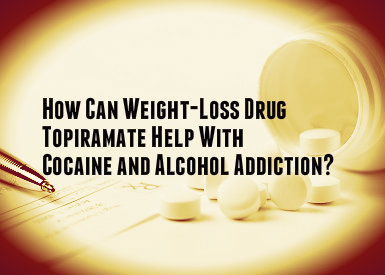 One of the effects of topiramate is an increase in the amount of gamma-Aminobutyric Acid, or GABA, in the brain. This substance is a neuro-inhibitor, and researchers now hope that using topiramate to increase GABA levels may help limit the dopamine release that happens when people take cocaine or drink alcohol. This would reduce the euphoric feelings that result from these substances, and make it easier for people to resist cravings and fight addiction.
One of the effects of topiramate is an increase in the amount of gamma-Aminobutyric Acid, or GABA, in the brain. This substance is a neuro-inhibitor, and researchers now hope that using topiramate to increase GABA levels may help limit the dopamine release that happens when people take cocaine or drink alcohol. This would reduce the euphoric feelings that result from these substances, and make it easier for people to resist cravings and fight addiction.
Details Of The New Study
Researchers in the psychiatry department of the Perelman School of Medicine at the University of Pennsylvania created and published the new topiramate study. These researchers were assisted by the Charles O’Brien Center for Addiction Treatment.
The study took place over 13 weeks, with the participation of 170 people who experienced both cocaine and alcohol dependence. The majority of the participants in the study were African-American males, and participants had an average age of 45.
Some of the patients were treated with topiramate, while others were given a placebo. The study employed a double-blind set-up, in which neither the patients nor the researchers knew who was taking the drug versus the placebo. This allowed researchers to examine the true effectiveness of the drug at reducing cravings, reducing overall consumption of cocaine and alcohol, and helping patients stay in treatment.
Mixed Results
At the conclusion of the study, researchers found both positive and neutral results for the effectiveness of topiramate. Patients who received the drug were more likely to remain in treatment and less likely to use cocaine during the last three weeks of the trial than those who received the placebo. Twenty percent of the participants on topiramate were able go without cocaine during the study, compared to only 7 percent of the participants on the placebo. Patients who had the worst withdrawal symptoms in the past seemed to benefit the most from topiramate.
However, the drug was not better than the placebo at reducing cocaine cravings. In addition, the drug did not help patients reduce their drinking even though they generally reported reduced alcohol cravings.
These results were somewhat surprising, since past studies have shown that topiramate did help people with alcohol dependence. The researchers in the Perelman School of Medicine have speculated that these poor results may reflect the low number of heavy drinkers who participated in the study. In past studies, the average number of days of heavy drinking among the study participants was much higher. It may be that topiramate is more effective for people who are very heavy drinkers.
What Is Next For Topiramate?
Although topiramate studies have been promising, additional research is needed to determine whether the drug can be a useful long-term tool for fighting cocaine and alcohol dependence. Researchers plan to perform more studies in order find out whether topiramate is effective when paired with additional drugs. By combining different drugs that have shown moderate success, researchers hope to produce even more impressive results for a greater percentage of patients.
Ultimately, larger scale studies will be necessary before the FDA can approve topiramate for additional treatment purposes.
Click Here – To Read More About Other Surprising Medications That Help Cocaine Addiction.
OxyContin is the brand name for a specific form of oxycodone, an opioid narcotic medication known for its potential to trigger problems with drug abuse or drug addiction. Because of the medication’s association with increased abuse and addiction risks, sale of all forms of oxycodone are strictly controlled under federal guidelines. However, according to a new investigative report by the Los Angeles Times, the manufacturer of OxyContin—a company called Purdue Pharma—has failed to report known instances of illicit or illegal prescriptions of the medication to authorities for more than 10 years.
After the report in The Times, two state senators in California have called on the maker of OxyContin to turn over the names of California physicians it suspects recklessly prescribed its pills to drug dealers and addicts.
Oxycodone Basics
Oxycodone is a synthetic substance made in pharmaceutical laboratories from a specific chemical found naturally in a plant called the opium poppy. When it interacts with nerve cells in the body’s central nervous system (brain and spinal cord), it reduces the body’s ability to feel pain. The U.S. National Library of Medicine lists available forms of oxycodone that include liquids, concentrates, capsules and tablets. While some oxycodone-containing products are sold without additional active ingredients, other products also contain acetaminophen, aspirin or ibuprofen. In addition to OxyContin, oxycodone-based medications include Percocet, Percodan and Endocet.
The same mechanisms that give oxycodone the ability to ease pain also give it the ability to alter normal function in the part of the brain that regulates pleasurable sensations. It is the intensity of the drug’s effects on the brain’s pleasure centers that accounts for its association with profound risks for abuse and addiction. Because of the potential for misuse of oxycodone, federal regulators have placed it on a list of officially controlled substances called Schedule II drugs. All substances on this list have clear usefulness as therapeutic medications, but also present enough risks to warrant strong restrictions on their use.
OxyContin Basics
OxyContin comes in tablet form and was originally marketed as a safer, long-acting alternative to morphine, another opioid narcotic capable of reducing moderate or severe forms of pain. When the medication hit the market, its safe use was significantly undermined by its easy crushability. This crushability encouraged abusers to rapidly introduce OxyContin into their bloodstreams through IV injection or inhalation. In an effort to correct a widespread pattern of misuse, Purdue Pharma introduced a non-crushable form of the medication in 2009. Following the release of this new product, misuse of OxyContin dropped by almost 200 percent. However, significant numbers of people across the U.S. still use the medication illicitly or illegally.
New Findings
In 2002, Purdue Pharma started tracking doctors across the U.S. suspected of knowingly prescribing OxyContin to people addicted to oxycodone or other narcotic or non-narcotic medications, as well as doctors suspected of selling their OxyContin supplies to drug dealers. As of 2013, the company had identified more than 1,800 physicians believed to be participating in these activities. However, Purdue Pharma has never made a concerted effort to release their list of suspects to any federal, state or local law enforcement agency, or to a medical body responsible for disciplining doctor misconduct. In fact, the company has sometimes made efforts to deflect attention away from purposeful, improper OxyContin prescribing by publicly linking the illegal availability of the medication to such things as robberies, theft of OxyContin by family members of legitimate users, and patients’ efforts to obtain the medication from multiple doctors.
Purdue Pharma only openly revealed the existence of its internal list of misprescribing physicians in June 2013. Because of the immense profitability of OxyContin, some investigators and public health officials have openly questioned the company’s motivations for not revealing its knowledge on the issue at any point in the last 10 years. Spokesmen for Purdue Pharma counter these criticisms by asserting that, while they have never released the names of all suspected doctors, they have separately given medical groups and law enforcement officials the names of 154 of the 1,800 physicians in their database. However, since no one outside the company has seen the full list of suspected misprescribers, there is no way to independently gauge the accuracy of these statements.
Considerations
Some of the doctors under investigation for illegally prescribing or selling OxyContin have been involved in widespread distribution efforts that meet federal and state standards for drug dealing. For instance, one California physician was recently convicted of illegally selling over 1 million doses of the medication. Another doctor prescribed millions of dollars worth of OxyContin and other opioid narcotics to people known to have problems with drug addiction. Officials from Purdue Pharma state that they have no legal obligation to assist law enforcement or medical regulators in their efforts to control OxyContin’s availability.



